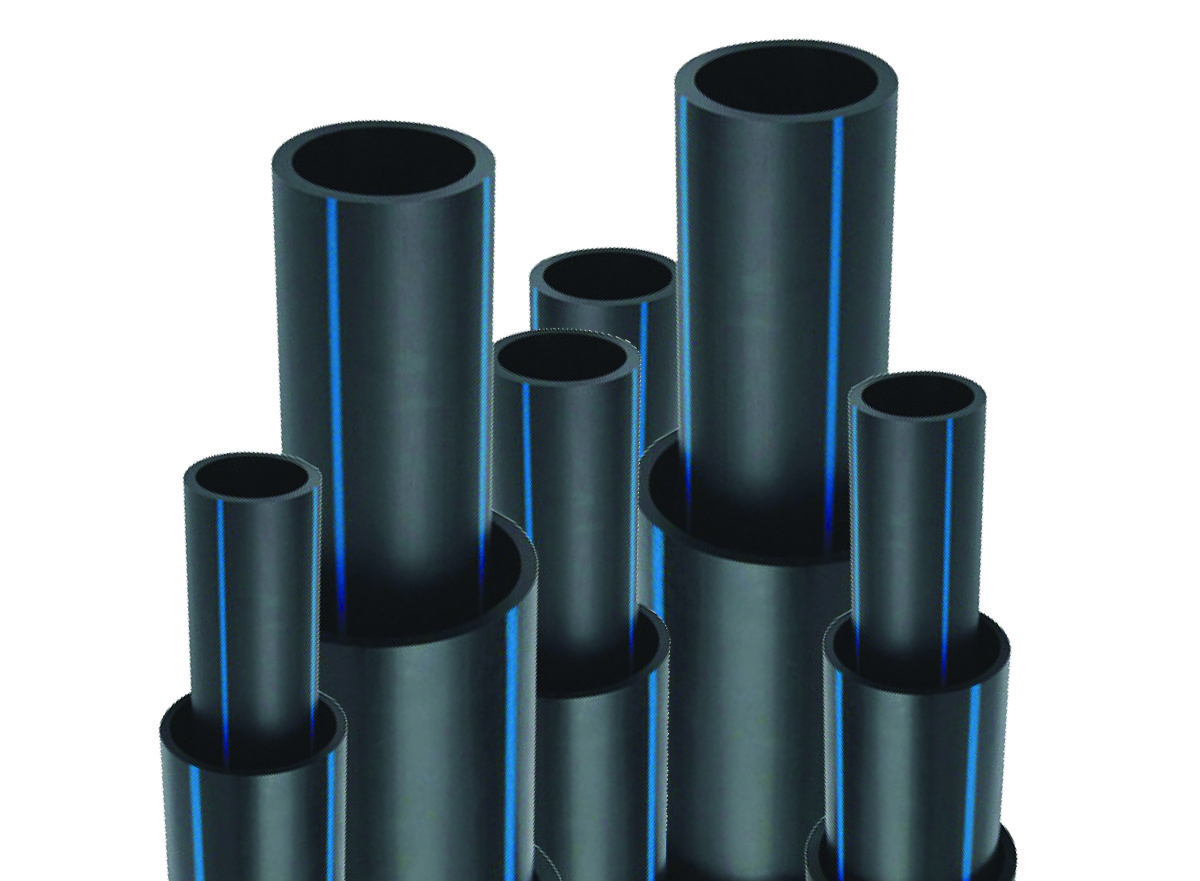How to Install hdpe pipe fittings Midland TX for Reduced Maintenance
Wiki Article
Understanding the Secret Benefits of HDPE Pipe for Water and Wastewater Administration
The usage of HDPE pipeline in water and wastewater management presents various advantages that merit consideration. Its exceptional durability and long life-span make it a recommended option for numerous projects. Additionally, the material's resistance to deterioration and chemical damages boosts its integrity in numerous environments. The benefits prolong past simply longevity and resistance. hdpe pipe fittings Midland TX. Discovering its cost-effectiveness and environmental influence reveals a lot more compelling reasons for its extensive fostering in modern infrastructureOutstanding Toughness and Durability

HDPE pipe sticks out for its extraordinary longevity and durability, making it a preferred choice in water management systems. Built from high-density polyethylene, these pipelines can withstand substantial pressure and anxiety, making certain dependable performance gradually. Their durable nature permits them to endure severe ecological conditions, consisting of temperature variations and dirt movements, which can trigger various other products to stop working.
The life-span of HDPE pipes often exceeds 50 years, offering a cost-efficient option for districts and sectors alike. In addition, the product's light-weight residential properties streamline setup, lowering labor expenses and timeframes. This sturdiness decreases the need for frequent repair work or substitutes, even more boosting its economic charm.
In water administration applications, the dependability of HDPE pipes suggests less disturbances and boosted service connection, making them essential to sustainable infrastructure development. The combination of toughness and durability solidifies HDPE's role as a foundation in effective water monitoring services.

Resistance to Deterioration and Chemical Damages
While lots of products give in to deterioration and chemical damages in time, HDPE pipelines exhibit exceptional resistance, making them perfect for different water management applications. This resilience originates from the molecular framework of high-density polyethylene, which is naturally non-reactive and does not rust like steels or weaken from direct exposure to extreme chemicals. Because of this, HDPE is very reliable in settings with aggressive substances, such as wastewater systems that may have acids, bases, and natural solvents.
Additionally, HDPE pipelines can endure environmental variables such as dirt acidity and saline conditions, additionally improving their suitability for varied applications (American Plastics HDPE Pipe Manufacturing). Their capacity to preserve structural stability in time reduces the risk of leakages and failures, which is important in guaranteeing the security and integrity of water distribution and wastewater monitoring systems. As a result, the resistance to rust and chemical damage noticeably contributes to the total performance and longevity of HDPE piping remedies
Cost-Effectiveness and Economic Benefits
When thinking about the financial effects of water management systems, the cost-effectiveness of HDPE pipes comes to be apparent. These pipes provide reduced setup and maintenance prices compared to conventional materials like metal or concrete. Their light-weight nature streamlines transportation and setup, leading to minimized labor costs. Additionally, HDPE pipelines display a long lifespan, usually surpassing 50 years, which converts to less replacements and long-term cost savings.The resistance of HDPE to rust and chemical damages lessens the requirement for pricey repair services and replacements. The pipes likewise sustain effective water circulation, decreasing energy expenses related to pumping systems. By mitigating leakages and water loss, HDPE pipelines add to substantial economic benefits for municipalities and industries alike. Overall, the initial financial investment in HDPE piping can produce significant monetary returns over the lifespan of the water administration system, making it a prudent selection for lasting facilities growth.
Environmental Sustainability and Lowered Influence

Versatility and Flexibility in Installation
As a result of their distinct homes, HDPE pipelines use remarkable flexibility and adaptability in installation, making them appropriate for a large range of applications. Their light-weight nature enables easier handling and transport, decreasing labor expenses and setup time. HDPE pipes can be curved and shaped to fit numerous surfaces and project requirements, which is particularly helpful in challenging atmospheres.Furthermore, their resistance to deterioration and chemical damage permits setup in diverse settings without the need for specialized safety coatings. The ability to fuse joints produces a constant, leak-free system, enhancing the total stability and integrity of the setup. HDPE's flexibility likewise accommodates ground movement, lowering the danger of damage in locations susceptible to moving soil. Overall, these characteristics make HDPE pipes not only flexible but likewise a preferred choice for water and wastewater monitoring systems.
Frequently Asked Concerns
Exactly How Does HDPE Pipe Contrast to PVC in Water Monitoring Applications?
HDPE pipe supplies exceptional adaptability, resistance to deterioration, and resilience contrasted to PVC. Its lighter weight promotes much easier installment, while its long lifespan decreases substitute prices, making HDPE a recommended selection in water management applications.What Is the Lifespan of HDPE Pipeline Under Typical Conditions?
Under regular problems, HDPE pipelines can have a lifespan ranging from 50 to 100 years. Their resilience and resistance to deterioration add to their long-term performance in numerous applications, making them a reliable choice for facilities.Are HDPE Water Lines Recyclable After Their Life Span?
Yes, HDPE pipes are recyclable after their life span. hdpe pipe in stock Midland TX. They can be processed and repurposed into new products, substantially reducing environmental influence and promoting sustainability within the market, making them a green option for piping remediesWhat Is the Setup Process for HDPE Pipes?
The installment procedure for HDPE pipelines includes site prep work, trenching, pipeline fusion or mechanical signing up with, backfilling, and stress screening. Correct strategies assure a resilient and reliable system for delivering water and wastewater effectively.Can HDPE Water Lines Be Used for Both Potable and Non-Potable Water Systems?
Yes, HDPE pipes can be utilized for both drinkable and non-potable water supply. Their flexibility, longevity, and resistance to deterioration make them appropriate for different applications, guaranteeing risk-free and efficient transport of water in various contexts.Report this wiki page